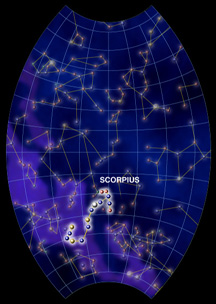The Constellation Scorpius, the Scorpion
Click on image for full size
Scorpius
More than any other constellation, Scorpius resembles its given name.
If you live in the northern hemisphere of the Earth, Scorpius crawls
across the southern sky, close to the horizon. But if you live in the
southern hemisphere, it passes high in the sky. The bright star
Antares marks the heart of the arachnid, and its long curving tail
trails to the south. The scorpion once had claws, but they were
cut off by Julius Ceasar to form the constellation Libra.
Where stars are concerned, whatever you are looking for, you can
probably find it in Scorpius. Antares is an unmistakable, brilliant
red supergiant star at the heart of the scorpion. One of the largest,
brightest globular clusters
in the sky is in Scorpius.
The scorpion holds an infamous place in Greek mythology as the slayer
of Orion. One story tells that Orion fled the scorpion by swimming the
sea to the island of Delos to see his lover, Artemis. Apollo, seeking
to punish Artemis, joined her and challenged her hunting skills, daring
her to shoot the black dot that approached in the water. Artemis won
the challenge, unknowingly killing her lover by doing so.
You might also be interested in:

What types of instructional experiences help K-8 students learn science with understanding? What do science educators teachers, teacher leaders, science specialists, professional development staff, curriculum designers, school administrators need to know to create and support such experiences?
...more
What's in a Name: Greek for "Rival of Mars" (Ares is Greek for Mars). Sometimes Antares is mistaken for Mars when they are close together because both are red. Claim to Fame: Brightest star in the constellation
...more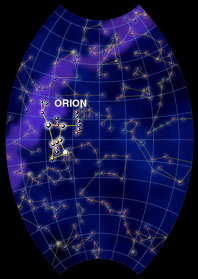
Orion, the Hunter, is by far the most famous seasonal constellation. No other is more distinct or bright as this northern winter constellation. The famous Orion's Belt makes the hunter easy to find in
...more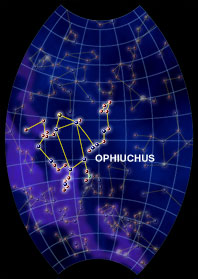
The constellation Ophiuchus is the Serpent Bearer. This large constellation can be seen in the night sky from June through October. Although most of the stars are dim, Ophiuchus' teapot shape makes it
...more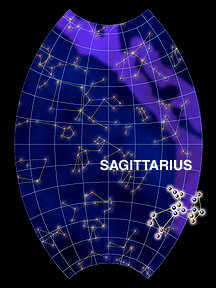
Sagittarius is a centaur, with the torso of a man atop the body of a horse. Unlike the wise and peaceful centaur Chiron (Centaurus), Sagittarius is aiming his giant bow at his neighbor, Scorpius. While
...more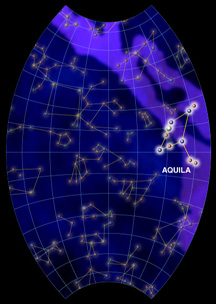
Aquila, the celestial eagle, is one of the three constellations which have bright stars forming the Summer Triangle. A nearly perfectly straight line of three stars symbolizes part of the wings. The center
...more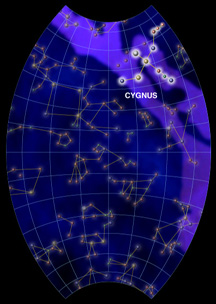
Cygnus, the Swan, is also known as the Northern Cross because of its shape. The tail of the swan is marked by the bright star Deneb, Arabic for "tail". Three fainter stars cross the line between Deneb
...more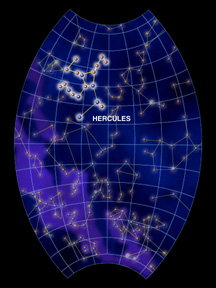
Hercules, the great Greek warrior, can be seen kneeling in the sky for northern latitudes throughout the Spring months. Hercules first becomes visible in the east in April, and works his way high across
...more


